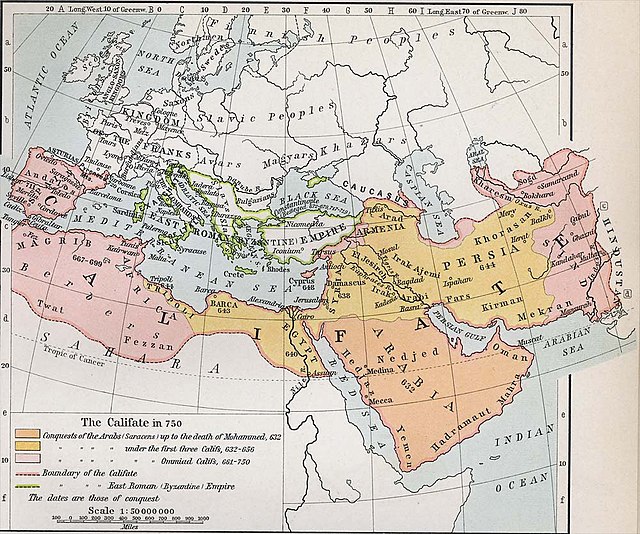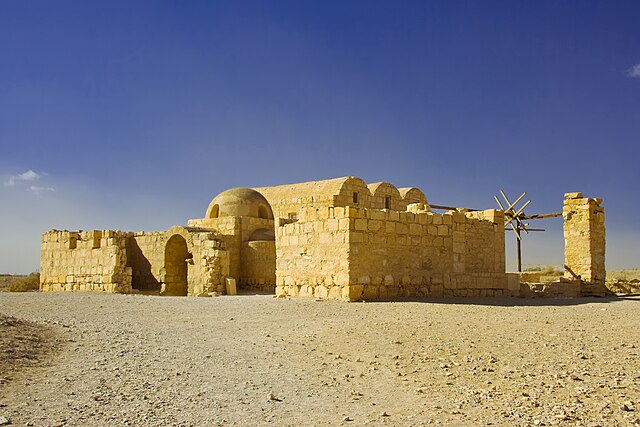The Abbasid Revolution, also called the Movement of the Men of the Black Raiment, was the overthrow of the Umayyad Caliphate, the second of the four major Caliphates in Islamic history, by the third, the Abbasid Caliphate. Coming to power three decades after the death of the Islamic prophet Muhammad and immediately after the Rashidun Caliphate, the Umayyads were an Arab empire ruling over a population which was overwhelmingly non-Arab. Non-Arabs were treated as second-class citizens regardless of whether or not they converted to Islam, and this discontent cutting across faiths and ethnicities ultimately led to the Umayyads' overthrow. The Abbasid family claimed descent from al-Abbas, an uncle of Muhammad.
The Caliphate in 750
Remnants of Qasr Amra, a desert palace where Umayyad princes were notorious for indulgence and extravagance
Coinage depicting Umayyad Caliph Abd al-Malik ibn Marwan
Folio from the records of Balami depicting As-Saffah as he receives pledges of allegiance in Kufa
The Umayyad Caliphate or Umayyad Empire was the second caliphate established after the death of the Islamic prophet Muhammad and was ruled by the Umayyad dynasty. Uthman ibn Affan, the third of the Rashidun caliphs, was also a member of the clan. The family established dynastic, hereditary rule with Mu'awiya I, the long-time governor of Greater Syria, who became caliph after the end of the First Fitna in 661. After Mu'awiya's death in 680, conflicts over the succession resulted in the Second Fitna, and power eventually fell to Marwan I, from another branch of the clan. Syria remained the Umayyads' main power base thereafter, with Damascus as their capital.

Arab-Sasanian-style Umayyad coin minted under Mu'awiya I rule in Basra in 675/76 in the name of the Umayyad governor Ubayd Allah ibn Ziyad. The latter's governorship later spanned all of the eastern caliphate. His father Ziyad ibn Abihi was adopted as a half-brother by Mu'awiya I, who made him his practical viceroy over the eastern caliphate.
Abd al-Malik introduced an independent Islamic currency, the gold dinar, in 693, which originally depicted a human figure, likely the caliph, as shown in this coin minted in 695. In 697, the figural depictions were replaced solely by Qur'anic and other Islamic inscriptions
The expansion of the Muslim Caliphate until 750, from William R. Shepherd's Historical Atlas. Muslim state at the death of Muhammad Expansion under the Rashidun Caliphate Expansion under the Umayyad Caliphate Byzantine Empire
A 14th-century illustration of the siege of Constantinople






